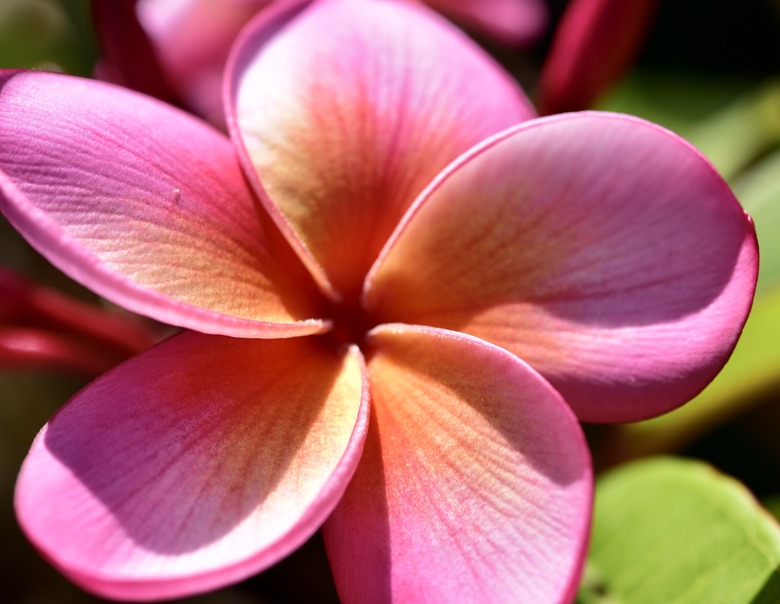The Best Fertilizer For Plumerias
We may receive a commission on purchases made from links.
Plants in the Plumeria genus — also known as frangipani — are native to tropical regions. In the U.S., they are typically grown in containers so that they can be brought indoors during cold weather, but they can be planted directly in the soil to grow year-round as perennials in U.S. Department of Agriculture plant hardiness zones 10 through 12. The recommended fertilizer for plumeria is high in phosphorous.
High-Phosphorous Fertilizer for Plumerias
High-Phosphorous Fertilizer for Plumerias
Many plumeria experts advise giving plumeria a high-phosphorous fertilizer. Phosphorous is an important nutrient for blooming, and plumeria grows new branches only when it's ready to bloom. Giving plumeria a high-phosphorous fertilizer encourages it to flower and, as a result, grow new branches.
But nitrogen, potassium and micronutrients remain just as important for plant growth and development, so they need to be available to your plumeria as well. Look for an N-P-K fertilizer with a high middle number (P stands for phosphorous), such as Schultz Bloom Plus 10-54-10 or Scotts Super Bloom 12-55-6. You can also use bone meal, which is naturally high in phosphorous and contains some nitrogen as well. However, you'll need to add a source of potassium, such as potash.
Test Soil for Phosphorous and pH
Test Soil for Phosphorous and pH
Too much phosphorous in groundwater can be potentially hazardous, and the use of high-phosphorous fertilizers may actually be restricted in your area. Contact your county extension office to double-check.
Your soil may already have plenty of phosphorous to support healthy plumeria growth and development. Use a soil test kit to identify nutrient imbalances, and apply only the depleted nutrients.
Fertilizers can also affect the soil's pH, so test that as well. Plumeria prefers slightly acidic soils (pH of 6.2 to 6.8). Add garden lime to raise the soil pH if it becomes too acidic from too much fertilizer.
When to Fertilize Plumeria
When to Fertilize Plumeria
Plumeria only needs to be fertilized when it is actively growing. It will enter a period of dormancy for approximately half of the year, starting in late September and continuing until early April. It shouldn't be fertilized during this time, as an influx of nutrients can cause it to come out of dormancy prematurely. The plant will be healthier overall if it's allowed to rest.
With this in mind, apply the first dose of fertilizer some time in April when the plumeria starts to leaf out. Continue to apply fertilizer every four to six weeks (or according to label directions) until it drops its leaves. Liquid fertilizer should be applied more often (every four weeks, or once a month, or according to label directions), but granular fertilizer can be applied less frequently (every six weeks, or according to label directions) because it releases nutrients at a slower rate. Follow the application rates on the package.
Follow a "little and often" fertilization rate for container-grown plumerias by fertilizing them every two to three weeks with a water-soluble fertilizer. Plant nutrients are water-soluble, so any water that runs out of the container drags nutrients with it, quickly depleting the soil. Because there's more soil to hold on to water in the ground, plumeria permanently planted outdoors needs less frequent applications of both water and fertilizer.
